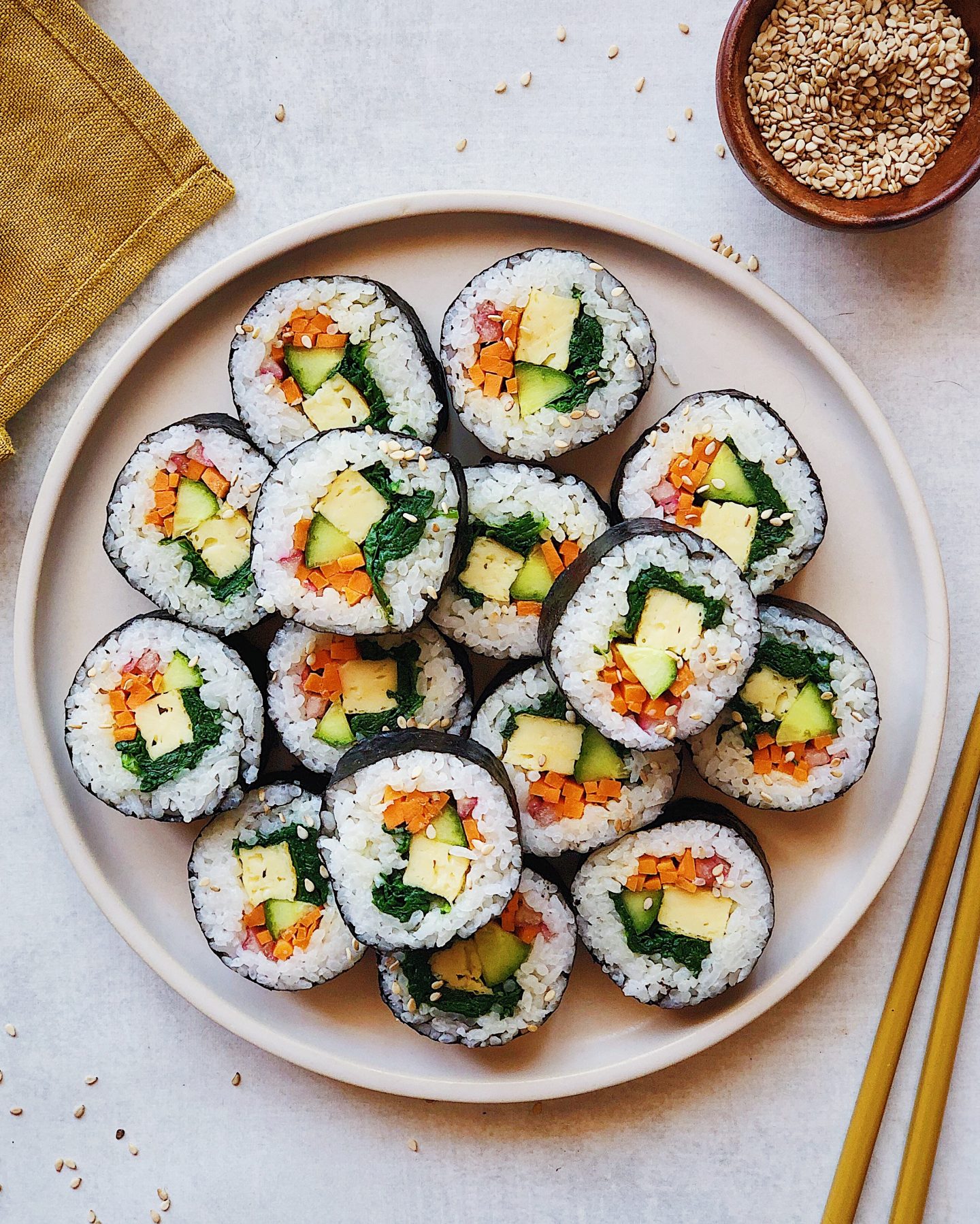
A lot of us are trying to make the most of our fresh produce these days but inevitably there are some extra scraps of veggies that won’t fit in the meals you’ve planned. Or maybe your local market is pre-portioning packs of fresh veg to prevent over-handling, so you’ve bought more than you need and don’t know what to do with the extra. Gimbap, or Korean rice rolls (sometimes also spelled kimbap) are a great way to turn whatever bits of veggies you have into a fun snack.
I made these gimbap using carrot, stems from my homegrown Swiss chard, a plant-based egg omelette, Persian cucumber, and spinach as my fillings, so this recipe will walk you through how to prepare these ingredients. However, feel free to use whatever! The key is to either cut your crunchy veggies into long strips to suit the shape of the rolls, or to sauté the smaller or leafier ones so they are also in a form that is easy to roll up.
You could also make a thick egg omelette and slice it up for this, or sauté some sliced meat. You can really make these however you like! Don’t forget to rub the seaweed paper with sesame oil though! This gives the gimbap their characteristic shine.
Veggie Gimbap
(Makes 3–4 rolls)
- 1 cup jasmine rice
- 3–4 sheets dried seaweed paper
- 2 tsp sesame oil, plus more for the roll
- 1 carrot, peeled
- 2 stalks Swiss chard
- 2 pieces plant-based egg omelette
- 1/2 Persian cucumber, cut lengthwise
- 5 oz bag baby spinach
- olive oil
- salt
- sesame seeds
Cook rice in rice cooker. When ready, fold in sesame oil and a couple pinches of salt and keep warm.
While rice is cooking, prepare your fillings. Cut carrot and Swiss chard stalks into long, thin pieces. Cut cucumber lengthwise into 4 wedges. Slice egg into strips.
Heat up a skillet on medium and gently stirfry the carrot in a little bit of olive oil until it is slightly soft. Remove and set aside. Add a little more oil to the skillet if needed, then add the spinach and sauté until wilted and excess water has evaporated. Remove from heat.
Place 1 sheet of seaweed on a bamboo rolling mat. Cover the bottom 80% of the sheet in a thin layer of rice. Place your fillings along the edge closest to you, as shown in the photo. Use the bamboo mat to carefully roll everything up away from you.
Rub the outside of the roll in a little sesame oil. Wet the blade of a sharp knife and slice the roll into 8–10 pieces. (You may need to wipe off the blade of the knife with a damp paper towel after each cut, to prevent the rice from sticking.)
Repeat with the remaining ingredients.
Garnish the pieces of gimbap with sesame seeds and serve.
